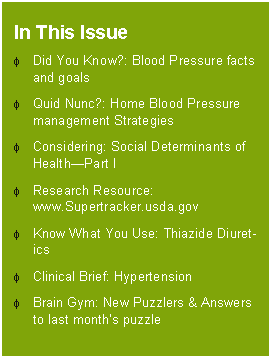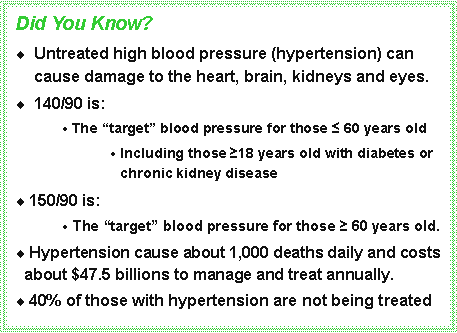|
The Informed Health Consumer Participant |
|
“This is not a time to be passive. This is the time to shape, sculpt, paint, participate…. the time to get sweaty, to get dirty, to fall in love, to forgive, to forget, to hug, to kiss…. this is the time to experience, participate and live your life as a Verb. ”
- Steve Maraboli |

Introduction:We have changed the name of our Newsletter! After a great discussion we decided that the word “consumer” was too passive for the role that patients must assume in this healthcare delivery system and not in alignment with the goal of this publication. Hence “participant”, the role you should play in all your health affairs, replaces “consumer”. In this issue, we will focus on some intangibles are critical to you remaining healthy, and a critical parameter—blood pressure– that significantly impact health. Enjoy! |
|
þ Choose low sodium foods to ò water retention and ò blood pressure. þ Increase exercise to ò weight and òstress on the heart and blood vessels. þ Reduce dietary fat and cholesterol to ò blood viscosity (thickness) and ò blood pressure. þ Quit smoking to ò blood vessel damage and ò blood pressure. þ Check out this month’s research resource “ Supertracker” . |

